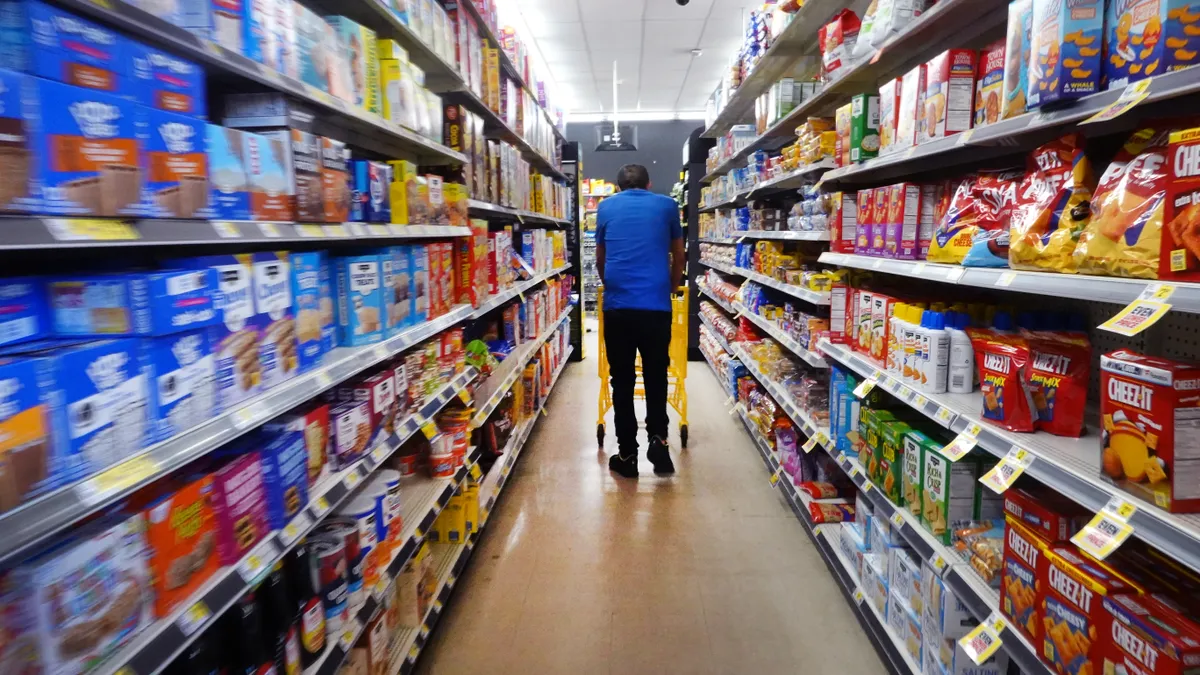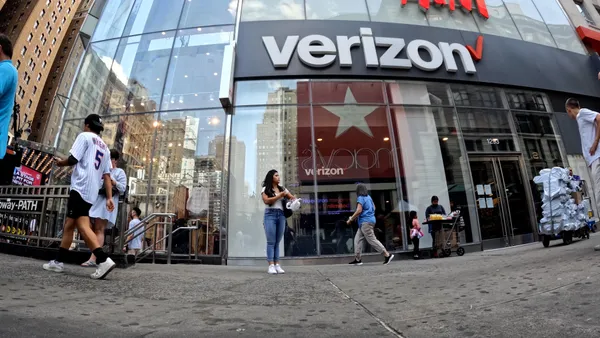Dive Brief:
- Consumer sentiment in July edged up to the highest level in five months as pessimism for the short-term business outlook eased and expectations for inflation in a year fell to 4.4% from 5%, the University of Michigan said last Friday.
- At the same time, household expectations for personal finances declined last month and sentiment persists well below both the level in December and the historical average, the university found in a monthly survey.
- “Consumers are unlikely to regain their confidence in the economy unless they feel assured that inflation is unlikely to worsen, for example if trade policy stabilizes for the foreseeable future,” Joanne Hsu, director of the university’s consumer surveys, said in a statement.
Dive Insight:
Recent stability in consumer sentiment coincides with mixed economic signals, along with widening opinions among Federal Reserve officials on the outlook for jobs and inflation, and whether to cut borrowing costs as soon as this month.
Retail sales rose 0.6% in June after a two-month slump. Ten out of 13 retail categories recorded sales gains, including motor vehicles, food and beverages, and building materials, the Census Bureau reported last week.
Unemployment eased last month to 4.1% from 4.2% in May as U.S. payrolls expanded by 147,000, a healthy clip. Yet state and local government, rather than the private sector, accounted for roughly half of the hiring.
Also, the consumer price index increased at a 2.7% annual rate in June compared with 2.4% the prior month, the Bureau of Labor Statistics said last week.
Imported goods led the price gains, indicating that tariffs have to a degree fueled inflation. The price for apparel, household furnishings and appliances rose 0.4%, 1% and 1.9%, respectively, the BLS said.
Prospects for inflation, employment and economic growth hinge to a big degree on whether tariff-induced inflation eases after a few months or persists into next year.
Several Fed officials in recent weeks have warned that import prices may provoke a sustained rise in prices. They have favored holding off on a reduction in the main interest rate until gaining greater clarity on price pressures.
“I see upward pressure on inflation from trade policies, and I expect additional price increases later in the year,” Fed Governor Adriana Kugler said last week.
“Given the stability in the employment side of our mandate, with the unemployment rate still at historically low levels, elevated short-run inflation expectations and goods inflation rising due to the upward pressure from tariffs, I find it appropriate to hold our policy rate at the current level for some time,” Kugler said in a speech.
Import duties will probably push up inflation by about 1 percentage point during the second half of this year “and the first part of next year,” New York Fed President John Williams said last week.
Holding the federal funds rate at its “modestly restrictive” level from 4.25% to 4.5% “is entirely appropriate to achieve our maximum employment and price stability goals,” Williams said in a speech.
Fed Governor Christopher Waller disagrees. Last Thursday, he called on his fellow policymakers to cut the federal funds rate by 0.25 percentage point at their meeting this month.
“Tariffs are a one-off increase in the price level and do not cause inflation beyond a temporary surge,” he said in a speech.
Also, “while the labor market looks fine on the surface, once we account for expected data revisions, private-sector payroll growth is near stall speed and other data suggest that the downside risks to the labor market have increased,” Waller said.
“With inflation near target and the upside risks to inflation limited, we should not wait until the labor market deteriorates before we cut the policy rate,” he said.
Over time, the central bank should aim to trim the benchmark rate to 3%, a “neutral” level that Fed officials believe would neither slow nor spur economic growth, Waller said.













